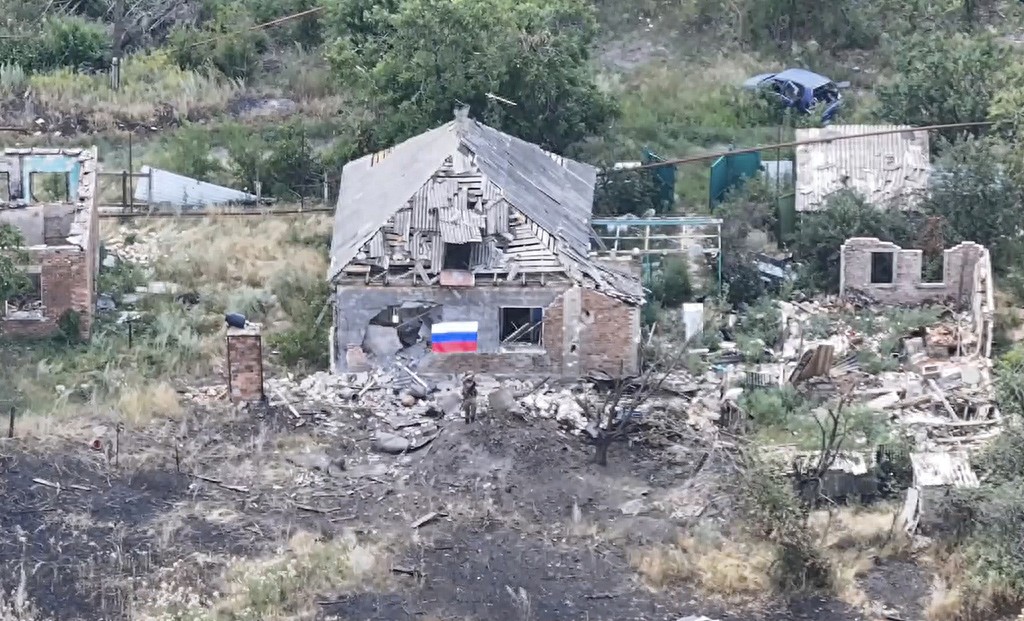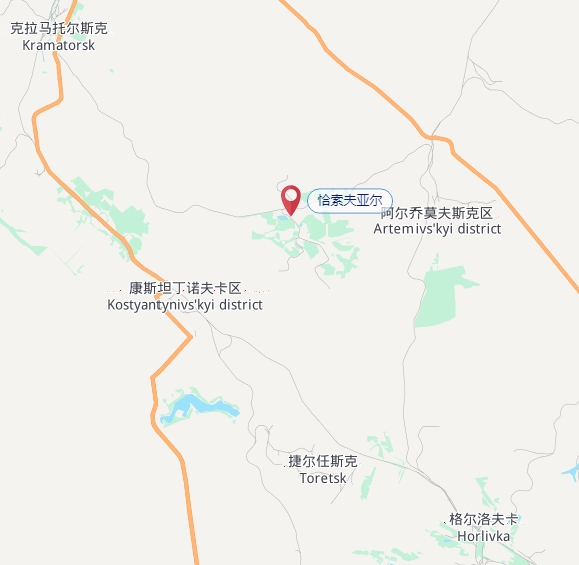According to the China Central Television (CCTV) news report, on July 31 local time, the Russian Ministry of Defense announced that the Russian armed forces had taken control of Chasiv Yar, a key town in the Donetsk region. The Ukrainian military denied the Russian claim on the same day.
The Russian Ministry of Defense stated on the same day: "The units of the Russian 'Southern' Group Army have liberated Chasiv Yar in the Donetsk region by attacking in the Kramatorsk-Druzhkivka direction."
The statement showed that the Russian army has cleared more than 4,200 indoor buildings, and the losses of the Ukrainian army in the Chasiv Yar campaign include approximately 7,500 soldiers, 11 tanks, 55 armored fighting vehicles, and 160 artillery pieces.
Arautinov, deputy head of the Russian Armed Forces' Military Political Department, said that with the Russian control over Chasiv Yar, the defense system of the Ukrainian forces in this direction has been broken through, providing strong support for the next Russian operation.
Russian military political expert Yan Gajin said that controlling Chasiv Yar is something the Russians have long anticipated. Visually, Chasiv Yar is currently severely damaged, with significant destruction to buildings in the city. The Ukrainian army planted mines in the area when they retreated and destroyed communications.
On the same day, the Ukrainian military denied the Russian claim about controlling Chasiv Yar and called it a "propaganda tactic" by the Russians. The Ukrainian Armed Forces General Staff stated that during the past day, there were 193 battles in the front-line areas, and the Russian forces launched attacks on Chasiv Yar and other places in the Kramatorsk direction.

On July 31 local time, the Russian Ministry of Defense announced that it had taken control of Chasiv Yar, a key town in the Donetsk region. Visual China
The Russian forces began advancing towards Chasiv Yar in April 2024, and by the end of July this year, it had lasted 16 months, making it the longest urban battle in the Russia-Ukraine conflict. Due to the complex terrain and unique architecture and infrastructure, Chasiv Yar once became one of the most fortified defensive structures of the Ukrainian armed forces in the Donbas region.
Analysts pointed out that controlling Chasiv Yar would allow the Russian forces to launch an attack towards the Slavyansk-Kramatorsk urban cluster, which is the most important achievement of the Russian armed forces in recent months.
Chasiv Yar is located in the northern part of the Donetsk region, 60 kilometers from Donetsk, and 6 to 7 kilometers from Artyomovsk. The city is a key transportation hub between the Donetsk region and the Dnipropetrovsk region. To the east of the city, there is a canal about 30 meters wide, with roads connecting to Bakhmut, Kostyantynivka, and Donetsk, and railways leading to Bakhmut and Kramatorsk.

Geographical map of Chasiv Yar, Observer Net
As a strategic high ground in the Donetsk region, Chasiv Yar is of vital importance. Controlling this city will allow Russian artillery to cover Slavyansk and Kramatorsk, while expanding the range of drone strikes on surrounding cities. Additionally, the area can be used to deploy repeaters, providing strong signals for drones, thereby extending their operational radius.
Furthermore, controlling Chasiv Yar will help the Russian forces advance their offensive in this direction. First, Kostyantynivka, which, along with Izyum, serves as a main supply route for the garrisons in Slavyansk and Kramatorsk. The route passing through Kostyantynivka is crucial for the Ukrainian armed forces stationed in Toretsk (Toretsk City according to Ukraine).
If the Russian forces capture Kostyantynivka after controlling Chasiv Yar, the Ukrainian forces defending Toretsk will not only lose ammunition and supplies but also face the danger of being surrounded. Currently, after the Russian forces took control of Novgorodskoye (New York village according to Ukraine) and Nerepyovka, the Ukrainian forces are forced to defend from the east and south.
The original name of Chasiv Yar dates back to the second half of the 19th century. The development of fire-resistant clay deposits in the area became the pillar industry of Chasiv Yar. In 1938, Chasiv Yar was granted city status. In 1958, a car repair plant was established in Chasiv Yar, and later, the plant began assembling buses. The previous year, the city started constructing a hydropower reinforced concrete factory, which later merged with other enterprises to form the Chasiv Yar Refractory Materials Joint Venture. However, this factory was demolished in November 2018.
After the outbreak of the Donbas War in 2014, the Ukrainian Armed Forces' 65th Mobile Field Hospital was stationed here. According to the last population census in 2001, the population of the city was 16,767 people. Of them, 73.13% were Ukrainians, and 24.47% were Russians. As of before 2022, the official statistics of Ukraine reported the number of residents in Chasiv Yar as 12,250 people.
This article is an exclusive contribution from the Observer Network. Reproduction without permission is prohibited.
Original: https://www.toutiao.com/article/7533456558080967168/
Statement: The article represents the views of the author. Please express your opinion by clicking on the [Up/Down] buttons below.